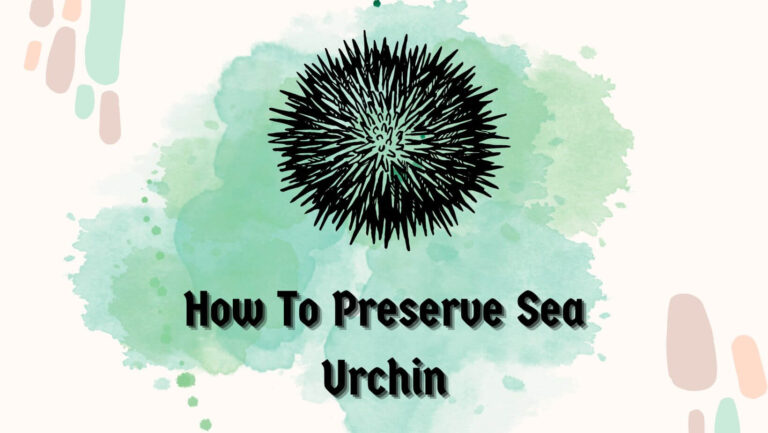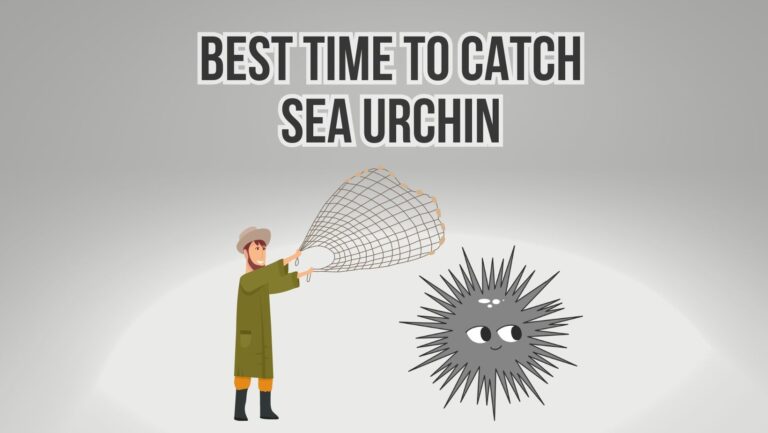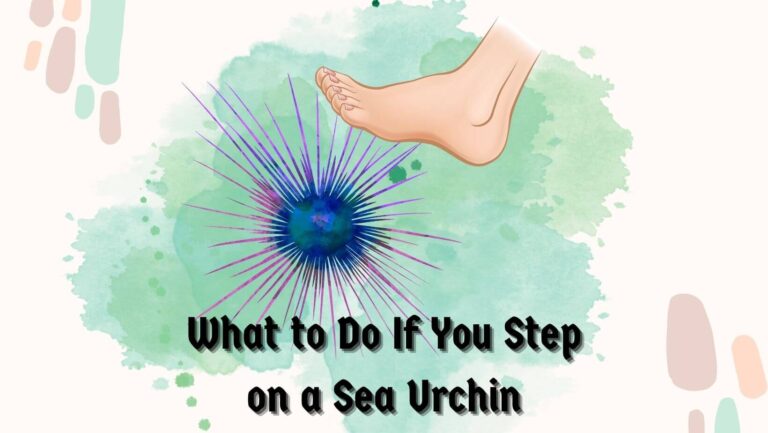
If you have recently heard anyone talking about sea urchins putting rocks on their heads, you might wonder, ‘Is it true or not.’ In this article, I will answer a very interesting question: do sea urchins put rocks on their heads?
Since sea urchins are fascinating creatures that inhabit Marine environments worldwide, this intriguing behavior has captured many researchers’ and scientific communities’ attention.
In this article, I will help you learn and explore this peculiar behavior, its potential reasons, scientific studies, and its implications for the ecological balance of our Marine ecosystem. But let’s first begin with the most intriguing question: Do Sea Urchins Put Rocks On Their Heads?
Table of Contents
Do Sea Urchins Put Rocks on Their Heads?

Yes, Sea urchins cover their bodies with rocks, shells, or other debris found in their surroundings. This behavior involves the urchin placing objects on its spines, creating a protective shield. This behavior has reached curiosity questions and investigations among the scientific community.
Researchers have observed sea urchins in the wild to gain valuable insights and found impressive details around their Rock covering behavior. It is uncommon to notice sea urchins collecting or arranging rocks on their spines.
A famous Marine biologist Dr. Emily Johnson noticed a sea urchin doing this behavior while scuba diving off California’s coast. She documented this behavior and brought the attention of many scientists and researchers to this puzzling phenomenon.
She also added her observations and highlighted the need for further research to know the reason behind this behavior of sea urchins. There have also been many hypotheses around this behavior of sea urchins that you might feel interested in knowing about. So let’s learn why sea urchins put rocks on their heads.
Why Do Sea Urchins Put Rocks On Their Head?
Since Dr. Emily Johnson discovered and highlighted the need for further research on sea urchins putting rocks on their heads, researchers have proposed several hypotheses to explain why they engage in such behavior. Below I am giving you three potential reasons why sea urchins put rocks on its head.
Protection from Predators
One popular hypothesis claims that sea urchins might cover themselves with rocks as a defense mechanism to protect themselves from surrounding predators. This hypothesis is worth noting, as it’s not uncommon for creatures to develop some defensive mechanism to survive.
Maybe sea urchins are trying to create a physical barrier using rocks to effectively deter or reduce the chances of being eaten by fish or other Marine organisms in the surrounding area.
To prove this, a study has also been conducted by MA Ziegenhorn to support this hypothesis. According to her Research and studies, sea urchins covering its body with Rock are less likely to be preyed upon than those without.
Camouflage
Yes, maybe sea urchins are trying to hide themselves using camouflage techniques to blend with their surrounding rocks. ResearchGate’s Fellows experimented on sea urchins, placing them with or without rock covering in stimulated Predator-prey scenarios.
He found that sea urchins with Rock covering were more successful in avoiding detection by predators than those that hadn’t been covered. This camouflage technique may help our sea friends invade visually oriented predators like a few fish species or Birds.
Whether this hypothesis is true or not, it gives our friends a crucial survival advantage.
Environmental Factors
Lastly, sea urchins might also cover behavior due to environmental factors. Many environmental factors, including water temperature, current strength, and sedimentation levels, influence almost every type of sea creature’s lifestyle. It might also influence sea urchin rock selection and covering behavior as well.
According to ResearchGate’s Fellows, there is a significant correlation between environmental conditions and the extent of Rock coverings among sea urchin populations.
They conducted very well-known Research to examine this correlation, and their Research revealed that sea urchins living in areas with high sedimentation rates tend to cover themselves at a higher tendency, potentially as a response to increased sediment loads.
Few researchers also tried to explore the potential reproductive significance of sea urchins that might be related to its Rock covering behavior?
ResearchGate’s study aslo found that male sea urchins with Rock cover rings tend to have a higher mating success rate than those without. This suggests that covering plays a significant role in attracting potential mates or acting as a signaling reproductive fitness.
Related Topic: Do Sea Urchins Wear Hats
3 Factors Influencing Rock-Covering Behavior

Predator-Induced Rock-Covering
The presence of a Predator could also trigger sea urchins to involve in rock-covering behavior. If a sea urchin perceives any threat, it might actively seek & collect Rock to create a protective barrier around itself.
As I told you in the above section, this response acts as a defense mechanism against predation for sea urchins. Not only ResearchGate’s Fellows but also many Marine biologists, conducted few experiment where they introduced a few predatory fish into a tank full of sea urchins.
You will not believe that, but those urchins responded quickly by covering themselves with surrounding rocks, demonstrating their ability to adapt and protect themselves against predation.
Environmental Factors Affecting Rock Selection
What type of Rock a sea urchin will choose will depend upon a few environmental factors, like the availability of suitable rocks, water quality, water temperature, sedimentation levels, and more.
If sea urchins live in areas with high sedimentation rates, they may cover themselves more extensively to reduce the impact of sediments on their bodies.
In addition to this, they prefer specific shapes and sizes of Rock to provide optimal coverage depending on the current speed. According to ResearchGate, there is a good correlation between sedimentation rates and the selection of larger, more rounded rocks for cover.
Seasonal Variations & Reproductive Factors
Monitoring sea urchins throughout the year can be an exhausting job. But, the famous researcher, Dr. James Thomson, conducted a study like this and found that males displayed more elaborate Rock covering during the breeding season compared to other times of the year.
This demonstrates that seasonal variation can impact sea urchin rock-covering behavior as well. Sea urchins collect rocks on their heads to attract potential mates and ensure reproductive success. Seasonal variations can also impact sea urchins’ rock-covering behavior.
During the mating season, sea urchins may modify their rock coverings as part of their reproductive strategies. Dr. James Thompson conducted a study monitoring sea urchin populations throughout the year.
He found that males displayed more elaborate rock coverings during the breeding season than at other times. Rock-covering behavior may play a role in attracting potential mates and ensuring reproductive success. Temperature may also affect all these, consider reading: How Does Temperature Affect Sea Urchins?
3 Implications & Impact
Sea urchins’ rock-covering behavior has significant implications for the ecological balance of marine ecosystems and conservation efforts.
Ecological Importance
You might not believe it, but Rock covering behavior that sea urchins have adopted also plays a significant role in our ecology. It offers them protection against predation, potentially influencing prey dynamics in the Marine ecosystem and allows them to survive a long period without coming in contact with any prey site.
The presence of sea urchins and their behavior plays a huge role in shaping the community structure of other organisms in their surrounding ecosystem.
For example, sea urchins primarily feed on algae, and rock covering helps them to access algae growing in crevices or on rocky surfaces that might be out of reach for other grazers.
This behavior is helping our ecosystem in helping in creating a healthy balance in the abundance of algae and preventing overgrowth, which can be detrimental to coral reefs and other Marine habitats.
Potential Conservation Concerns
Not only for researchers but also for all people, it is important to understand sea urchin’s Rock covering behavior for effective conservation and management strategies.
The environmental disturbance we are making, like pollution or habitat degradation, can poorly impact the availability of suitable rocks for sea urchins to cover themselves.
This, in turn, will not only affect sea urchins’ ability to protect themselves from predators but also potentially shift the ecosystem dynamics due to the urchin’s population decline.
Therefore, recognizing the importance of sea urchins and their behavior can inform conservation efforts to preserve their habitats and the delicate balance of marine ecosystems they live/inhabit.
Future Research Directions
Even though our scientific community has made impressive progress in understanding sea urchin Rock covering behavior, several aspects still require further investigation and more in-depth experiments.
A few of the Research that we could focus on include understanding and fine-tuning the specific factor that triggers sea urchins to change Rock covering behavior and exploring potential variations among different species and habitats.
We can also conduct field experiments to study the interactive effects of environmental factors like water quality or Rock selections and covering behavior, just like Dr. Samantha Lee. Investigating the physiological and molecular mechanism underlying sea urchins’ ability to sense and respond to predators or environmental cues is also required. This raises a very interesting question: are sea urchins sentient?
Well, you can check the answer here. Further examinations and studies are required to know more about the long-term ecological consequences of sea urchin rock covering behavior on the structure and dynamics of marine ecosystems.
These future research directions can help us dig more about them and fine-tune the current understanding of sea urchin Rock covering behavior and potential variations in species sharing the same environment.
Conclusion
Since the urchin rock-covering behavior is a fascinating phenomenon that has intrigued the scientific community and nature enthusiasts, we will also encounter more studies and information about this behavior in the future.
More in-depth studies and observations are required to uncover other potential reasons behind this behavior. However, we have learned much about sea urchins and their behavior of Rock covering until now.
If you find this article helpful, then consider sharing it. Your share will help many people learn about this fascinating phenomenon of sea urchins and make them aware of why sea urchins are covering their heads with Rocks.
If you find this article interesting and helpful, consider checking our recent articles on sea urchin facts. See you in the next post, till then, take care and goodbye.






